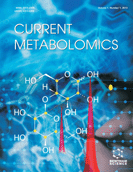Abstract
Metabolism represents interconnected networks of metabolite consumption and creation. The field of metabolomics is focused on metabolite concentrations in metabolic networks. Fluxomics quantifies the flux of substrate through each reaction step or a series of reaction steps and is required for energy balance equations of the system. Quantifying metabolic flux of every pathway is unnecessary because there is at least one regulatory enzyme per pathway. Hence, to predict flux for intermediate metabolic pathways, in silico models typically use the total flux of a pathway merged with literature derived steady-state concentration and kinetic values (Vmax and km) as computational conditions. The assumptions of the model can be false or unreliable in the disease state or with xenobiotic exposure. Therefore, the relatively small amount of experimental flux data used in metabolic model must be robust and reliable.
Presently, there is no review that lists the multitude of bioenergetics flux values for multiple species, while also highlighting potential errors associated with experimental procedures or data analysis. In this review, the flux values for multiple metabolic pathways in liver of whole animal, perfused liver, and hepatocyte culture studies will be reviewed. Also, the potential pitfalls of experimental stable isotope resolved metabolomics (SIRM) data are described. For animal studies, the main causes of inter-laboratory variance are the effects of anesthesia, adrenergic response during animal handling, variation in tissue sample acquisition and metabolic quenching, and tissue extraction procedures. Solutions to these issues will be discussed. While cell and organ models hope to reduce the complexity of the whole organism to a controlled system of two or more compartments, they do not fully mimic the whole animal inter-organ response and the dynamic concentrations of the metabolite, gases, soluble or insoluble factors in the central compartment. To demonstrate the effects of these factors, studies of the effect of ethanol on hepatocyte, perfused liver and animal studies will be compared, while SIRM studies of human and rat hepatocyte cultures will demonstrate the problem of cell culture in mimicking the normal metabolism.
Keywords: 13C NMR spectroscopy, computer models, hepatocytes, 1H NMR spectroscopy, in vivo MRS, metabolomics, stable isotope resolved metabolomic (SIRM).
 31
31

















